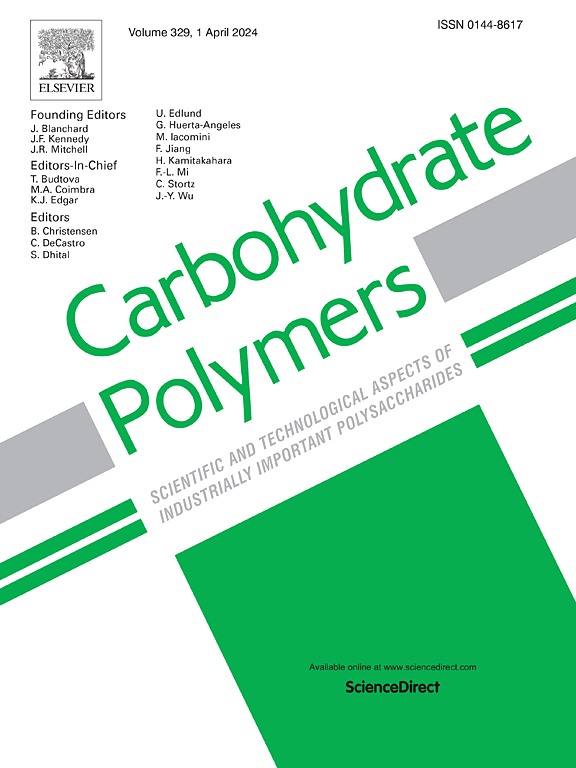Electrical percolation network based on nano-cellulose template for flexible hydrogel bioelectrode
IF 10.7
1区 化学
Q1 CHEMISTRY, APPLIED
引用次数: 0
Abstract
Hydrogel based electrodes have been applied in the field of bioelectronics, which is of great significance for constructing a robust human-computer interface. However, achieving both reliable conductivity and tissue matching mechanical properties remains challenging. Here, we report a synergistic strategy for constructing a hydrogel electrode for bioelectronic interface with tissue modulus and high conductivity by bacterial cellulose (BC) template induced growth polypyrrole (PPy) electrical percolation network combining a polymethacryloyloxyethyl trimethyl ammonium chloride (PDMC) hydrophilic network. This strategy balances the modulus and conductivity of the bioelectrode, makes up for the adverse effect of the conductive filler on the mechanical properties of the hydrogel, and constructs an effective conductive pathway. The electrical percolation of the hydrogel can be achieved at a low permeability threshold, and the flexibility (E = 288 kPa) of the hydrogel electrode with high conductivity (135.75 S/m) can be obtained. Moreover, the hydrogel electrode has low interface impedance and superior charge storage and injection capability, which allows higher signal-to-noise ratio of recording epidermal electrophysiological signals than that of commercial electrodes. The conductive, flexible and biocompatible hydrogel prepared here provides a new way to construct reliable bioelectronic devices.

基于纳米纤维素模板的柔性水凝胶生物电极电渗透网络
水凝胶电极已广泛应用于生物电子学领域,对构建鲁棒的人机界面具有重要意义。然而,实现可靠的导电性和组织匹配的机械性能仍然具有挑战性。在这里,我们报告了一种协同策略,通过细菌纤维素(BC)模板诱导生长聚吡咯(PPy)电渗透网络结合聚甲基丙烯酰氧乙基三甲基氯化铵(PDMC)亲水网络构建具有组织模量和高导电性的生物电子界面水凝胶电极。该策略平衡了生物电极的模量和电导率,弥补了导电填料对水凝胶力学性能的不利影响,构建了有效的导电途径。在低渗透率阈值下实现水凝胶的电渗流,获得高电导率(135.75 S/m)的水凝胶电极柔韧性(E = 288 kPa)。此外,水凝胶电极具有较低的界面阻抗和优越的电荷存储和注入能力,使得记录表皮电生理信号的信噪比高于商用电极。制备的导电、柔韧、生物相容性好的水凝胶为构建可靠的生物电子器件提供了新的途径。
本文章由计算机程序翻译,如有差异,请以英文原文为准。
求助全文
约1分钟内获得全文
求助全文
来源期刊

Carbohydrate Polymers
化学-高分子科学
CiteScore
22.40
自引率
8.00%
发文量
1286
审稿时长
47 days
期刊介绍:
Carbohydrate Polymers stands as a prominent journal in the glycoscience field, dedicated to exploring and harnessing the potential of polysaccharides with applications spanning bioenergy, bioplastics, biomaterials, biorefining, chemistry, drug delivery, food, health, nanotechnology, packaging, paper, pharmaceuticals, medicine, oil recovery, textiles, tissue engineering, wood, and various aspects of glycoscience.
The journal emphasizes the central role of well-characterized carbohydrate polymers, highlighting their significance as the primary focus rather than a peripheral topic. Each paper must prominently feature at least one named carbohydrate polymer, evident in both citation and title, with a commitment to innovative research that advances scientific knowledge.
 求助内容:
求助内容: 应助结果提醒方式:
应助结果提醒方式:


